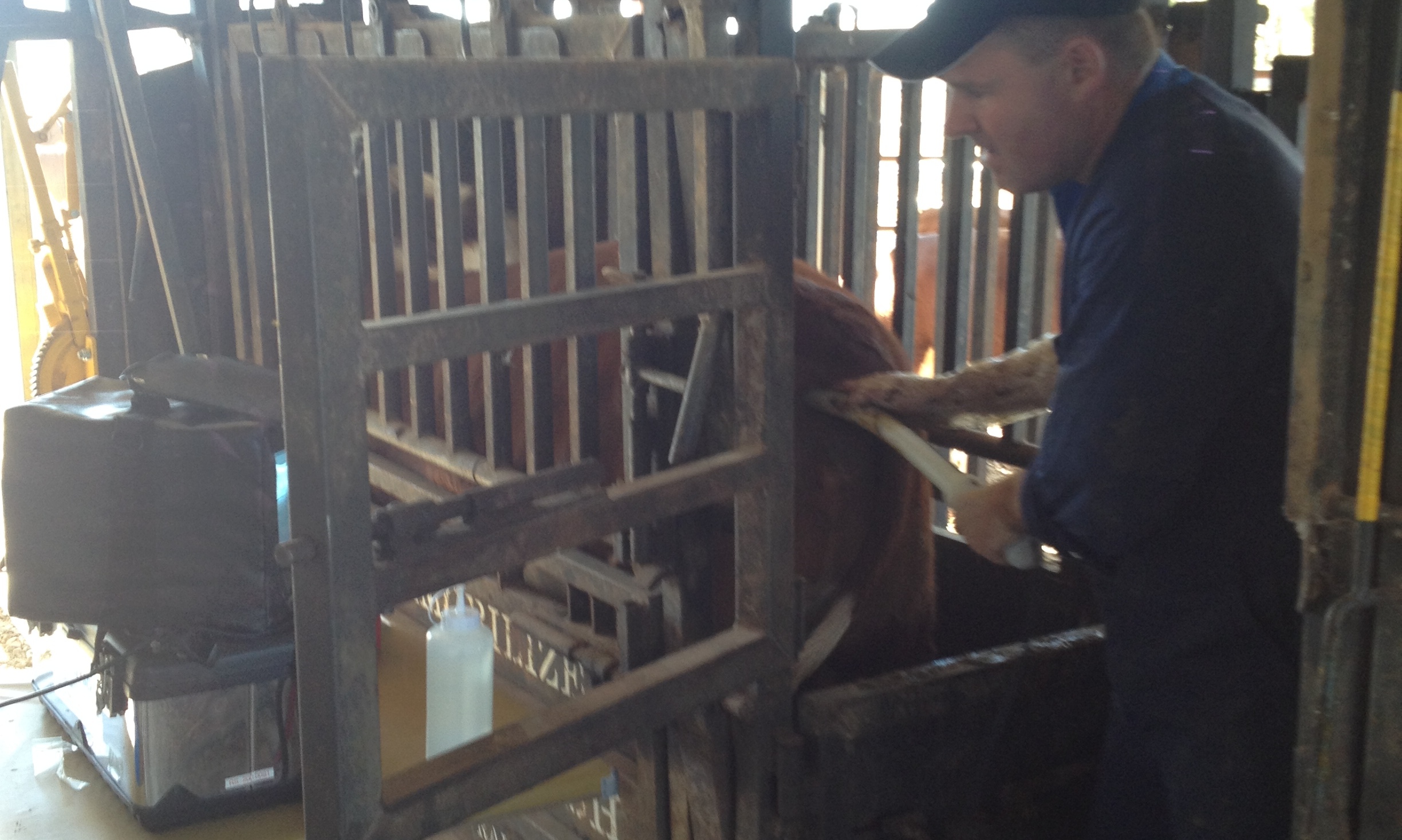I think pregnancy testing is one of the most powerful insights you can have into your breeding herd. I’ve been offering pregnancy testing for the past four years. In that time I’ve come to look at pregnancy testing as not just a service that I can offer. I’ve come to value and appreciate the opportunity testing offers to evaluate a lot of management strategies in each herd I visit.
So why preg test in the first place?
I do have producers who tell me they don’t need to preg test. The reasons vary. Some people won’t because the think its too expensive. Others because they feel their fertility levels are spot on and pregnancy testing wont do much to change their fertility. I’ve also had other people tell me they are yet to be convinced in the need to test.
So lets think about the reason why you would test. At the very basic level, pregnancy testing allows you to determine the number of calves you expect to be born each year. The profit of any beef herd is driven by the kilograms of beef produced per hectare. Having live calves on the ground to grow and sell directly influences profit.
Unlike a sheep flock where the ewe will grow a fleece that can at the least offset, and hopefully exceed the costs associated with her management and maintenance each year, you cant shear a cow! You can’t cover her costs in any other way unless you sell her or she produces a calf to grow and sell.
In my mind the first reason to test is to make plans based on the number of calves you expect. It also lets you assess the cows that are not contributing to the productivity and profitability of the business. The ones that are not pregnant and will consume feed that really should be offered to the productive females first!
So what about these excuses not to test? The first is that it’s too expensive. I know my testing rates per head are less than a cup of coffee. For that price you receive information that allows you to plan the year ahead, and to save a lot of feed on non-productive females.
I actually calculated a price to feed non-pregnant females recently using some oats and hay. Based on the NSW DPI Drought Feed Calculator, I worked out the cost of feeding a cow and calf. The results were really interesting.
Basically a 550kg cow with a calf at foot would eat 9.68kg of Dry matter a day. Based on the cost of grain and hay, this would cost you $2.16 / day or $65.00 a month. So in my head, spending less than $4.00 would allow you to save the cost of feeding a non-productive female.
More tellingly, you could choose to feed that non-productive female and sell her into the market at a slightly higher value. Either way, I reckon it’s still pretty cheap to test and a better way of making a decision than waiting until calving and seeing how many calves are on the ground.
What about the people who think their fertility is spot on?
I saw an interesting slide yesterday from another consultant. It said, 80% of farmers think they are in the top 20% for production. That may be true. Having tested a lot of cows now, I know that many people overestimate their fertility levels.
In my mind, fertility isn’t just cows in calf. It’s also about knowing when your cows went into calf.
Productive and profitable cows are cows that can repeatedly conceive, calve and rear a calf every 12 months. In practical terms this can be hard to achieve. With a cow’s pregnancy lasting for 282 days, it takes a cow in average condition around 40 days to return to oestrus. So there are really only about 2 heat cycles left in the year to go back in calf.
You can select for females that are more fertile. Basically by selecting the ones that go into calf earlier in the joining cycle. This not only means you hit the target of a calf every 12 months. It also means that her calves are born earlier, and will be heavier at weaning and at sale time. It also means your replacement females will be heavier at joining and more likely to go into calf and successfully rejoin next time around.
I reckon the opportunity to make these decisions and evaluate each cow on its fertility is incredibly powerful. Personally I love the opportunity to collect this data and talk at the crush about the options for management of dry cows, which heifers to select as replacements, and to discuss herd health strategies. In fact the chance to do this in the yards as the cows come through shapes and focuses many management decisions for the remainder of the year.
For me, the next two months will see me in yards all over NSW testing cows and planning to use the results to make some more money. If you are still tying to decide if you should test, all I can say is that one test is much cheaper and more powerful than a cup of coffee!!







